UNIVERSITY
A look into Brown’s queer reputation and population
BY LINUS LAWRENCE SENIOR STAFF WRITER

After having their five-game win streak snapped on Wednesday eve ning by College of the Holy Cross, the women’s basketball team (6-3) bounced back to take a 68-52 victory over the University of Hartford (0-8) on Saturday afternoon at the Pizzito la Sports Center.
The Bears held the lead for nearly the entire game, relinquishing it only for a brief moment in the middle of the first quarter when they were down 9-8. Momentum seemed to be swinging the Hawks’ way with a nine-point run in the second quarter, cutting the Bears’ lead to 28-24, but after calling a timeout the Bears responded with three straight layups to go back up by 10.
“Our team is really hungry to win,” said Head Coach Monique
”
“What I like about the team is they typically respond when challenged,” LeBlanc continued.
U. hosts Midyear Completion Celebration
BY ALEX NADIRASHVILI UNIVERSITY NEWS EDITORNearly 100 undergraduate students filed down the aisles of the Salo mon Center’s DECI Auditorium to the instrumental tune of Katy Per ry’s “Firework” Saturday night, pre paring to walk across the auditori um’s stage as formal recognition for completing their degree require ments.
Each year, the University hosts the Midyear Completion Celebration to “honor undergraduates who expect to complete their degree requirements in December,” according to the cer emony’s program. “The celebration provides an opportunity to recognize the achievements and unique paths of Brown’s ’0.5ers.”
The Chattertocks, one of the Uni versity’s 15 a capella groups, opened the event with a performance of the
national anthem, followed by a read ing of the invocation from Reverend Janet Cooper Nelson, the chaplain of the University. The events also featured speeches from Dean Rashid Zia ’01, President Christina Paxson P’19 and three undergraduate speak ers: Seth Goldstein ’22.5 and a joint speech from Liliana King ’22.5 and Charlotte Scott ’22.5.
Zia called the celebration “one of the most joyous events on the Brown calendar.”
“This auditorium — perhaps a space in which many of you have spent countless hours in classes and exams, staging performances and de bating ideas — will be transformed this afternoon through your presence and our voice into a hall of celebra tion,” he said.
Zia then reflected on the many different reasons students finish their undergraduate degree requirements mid-year, from students transfer ring from other universities to those taking leaves of absence to pursue work and creative projects. For many members of the class of 2022.5, the
BY LILIANA GREYF STAFF WRITERBrown’s reputation is undeniably queer, Lainey Bechta ’25 said. “Part of what drew me to Brown is that it’s a historically more queer Ivy,” she said. “But now that I think about it, I don’t know where I heard that.”
Bechta’s understanding of the per ception of Brown as a particularly — even predominantly — queer insti tution is widespread, but its roots are difficult to identify, Davi Sapiro-Ghei ler ’23 said. “I think we’re known as a queer place,” they said. “It’s hard to say why that is.”

Over 35% of Brown’s current stu dent body does not identify as het erosexual, according to a poll con ducted by The Herald and the Brown
Opinion Project in October. According to previous reporting by The Herald, queer studies are taught in several departments, the LGBTQ Center has moved into a larger renovated space and students flock to gay clubs. Stu dents mentioned that queer culture and experience at Brown is fostered and regulated on many levels: by the actions of the administration, the norms of social communities and the reputation of the University as a whole.
“I feel like one of the reasons Brown attracts more queer people isn’t because of what the institution does, but because it has the reputation of being more liberal,” Chris Bianco ’25 said. “Obviously being politically liberal doesn’t necessarily go handin-hand with being queer, or being accepting of queerness, but there is correlation there. You kind of assume that since it’s a more liberal school, there’ll be more queer people and then more queer people will go.”
M. basketball beats in-state rivals Bryant
BY ABE WYETT STAFF WRITERThe men’s basketball team (5-4) faced off against in-state rival Bryant Univer sity (7-3) Friday, defeating the Bulldogs 72-60 on the road — their seventh win in their last eight matchups against Bryant. Bruno also defeated the University of Hartford (4-7) 65-51 Sunday, extending the Bears’ winning streak to four and giving the team a winning record for the first time this season.
After establishing an early lead, Brown led Bryant 44-24 at halftime. The Bears held onto their lead with efficient shooting from the field and from behind the arc.
Brown is now fifth in the Ivy League basketball standings, ranking above Penn, Dartmouth and Columbia.
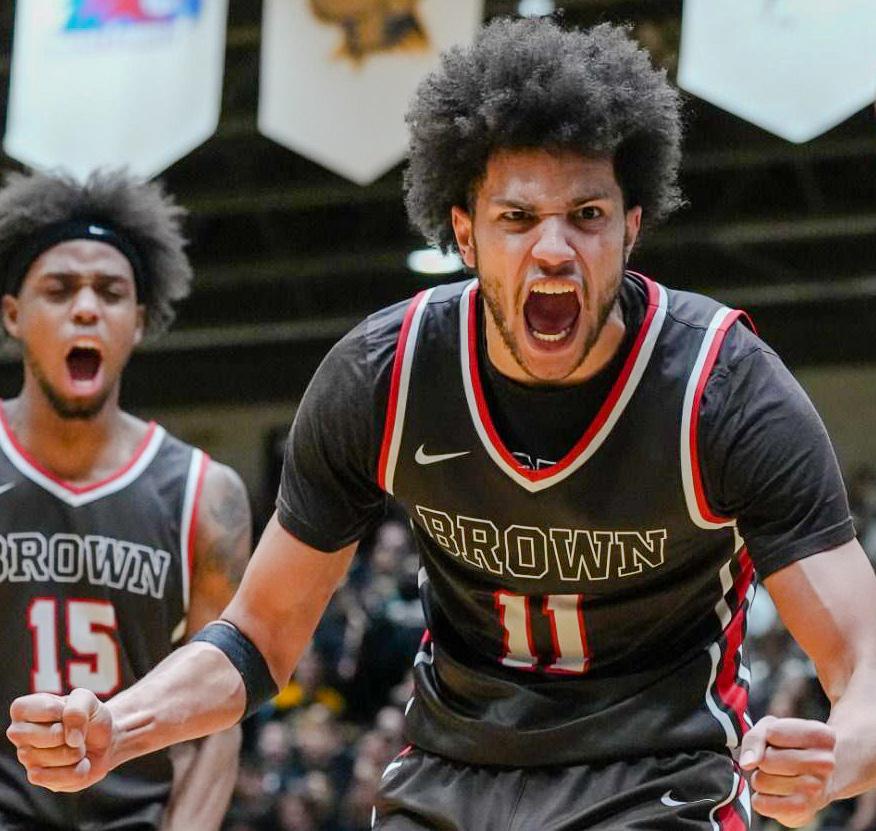
With Nana Owusu-Anane ’25 and Dan Friday ’24 sidelined, Kalu Anya ’26, Kino Lilly Jr. ’25, Aaron Cooley ’25, Malachi Ndur ’24 and Paxson Wo jcik ’23 started against the Bulldogs.
Despite losing the opening tip, Bru no quickly took control of the pace of the game when Lilly and Cooley connected for an alley-oop to spark Brown’s offense.

Subsequent buckets by Wojcik, Cooley and Ndur extended Brown’s opening run to 9-0. Bryant scored their first points with a free throw with 16:47
left in the first half.
Brown continued to control the game with an 11-5 run, leading 20-5 with 13:50 remaining in the first half. With Bruno leading 35-16 with 3:50 left on the clock in the half, Wojcik assisted Perry Cowan Jr. ’23 for a deep three,
Students compare queer community at University with hometowns
SPORTS
Bruno improves record to 5-4 with Sunday victory against University of HartfordLeBlanc. “Those timeouts were just a reminder of, ‘hey, we have our own standards for how we want to play defense. Let’s really tighten up and let’s be better.’ The Bears played without Kyla Jones ’24, their top scorer this season, who was sidelined with a minor injury. The team on Saturday was led offensively by Isabella Mauricio ’25, who recorded 18 points, including five three-point shots.
SPORTS Bears improves to 6-3 record, reaching team’s win total from 2021-22 seasonUNIVERSITY NEWS
Ceremony features three student speakers, keynote address from President PaxsonCOURTESY OF BROWN ATHLETICS COURTESY OF TAMAR KRIETMAN / BROWN ATHLETICS The Bears ran up the score against the Bryant University Bulldogs in the first half, leading 44-24 at halftime. The Bears held the lead against the University of Hartford for nearly the whole match, only losing the advantage once in the first quarter.
Women’s hockey falls to No. 10 Cornell despite two goals from Iginla ’26
BY NICHOLAS MILLER SENIOR STAFF WRITERThe women’s hockey team (4-7-1, 2-4-0 Eastern College Athletic Con ference) continued its struggles against nationally ranked opposition Saturday, losing to No. 10 Cornell (73-2, 5-2-1) 4-2 after conceding three unanswered goals in the third period.
The Bears have now lost seven of their last eight games, with all defeats coming against nationally ranked teams.
“We know what our league is and we know the direction we’re going as a program,” said Head Coach Melanie Ruzzi. “I’m not frustrated because I thought we played really well.”
The Bears weathered early attacking pressure from Cornell. Seven minutes into the game, Brown goalie Kaley Doyle ’24 denied a golden opportunity from the Big Red in a two-on-one situation.
Doyle made 11 saves during the first period, which allowed forward Jade Iginla ’26 to put the Bears ahead while shorthanded with 90 seconds un til intermission. With Sonja Bjornson ’23.5 serving a hooking penalty, Iginla poked the puck away from a Cornell defender in the Brown defensive zone and jumped out on a breakaway. Still all alone after reaching the attacking zone, she subtly faked a shot before dragging it to her backhand and lifting it over Cornell goalie Deanna Fraser’s outstretched pad.
“I was just trying to be in the lane to block a shot and I could see her on the backhand,” Iginla said, referencing the steal that led to her goal. “Just a little poke check and I’m off to the races.”
Shortly after Iginla’s goal, Doyle was pressed into action once more. With
Doyle caught off balance after lunging to her left expecting a shot that nev er came, Cornell skater McKenna Van Gelder seemingly had a wide-open net. But Doyle, falling to her stomach, lifted her pad to deny Van Gelder’s attempt.
Doyle was busy throughout the sec ond period as well, making 14 saves, but it was the Bears who scored the period’s first goal, which came with just 1:08 left. It was again Iginla who found the back of the net, but this time with Brown on the power play. A shot from defender Cameron Sikich ’25 re bounded off Fraser and found its way to Iginla, who slotted it into the open net for her team-leading seventh goal of the season.
“She’s been an important cog for our offensive side especially. To step in as a freshman and play the center
position is tough. She’s adapted well, she’s strong, she’s skilled, she has a sense of the game and she’s growing every game,” Ruzzi said.
But Brown didn’t keep their twogoal cushion for long. Off the immedi ate faceoff, Cornell forward Izzy Daniel found herself all alone on the right wing and, receiving a pass in the neutral zone from forward Gillis Frechette, skated into the attacking zone and lasered a wrist shot that bounced off the post and into the goal past Doyle. The goal came just 10 seconds after Iginla’s second.
“At times we made some young mis takes, particularly after we scored the second goal to create some separation. We win the faceoff, and instead of get ting it over the redline and getting it deep, we flub the puck and turn it over and that’s how they score,” Ruzzi said.
“And that’s a maturity thing. Those are learning moments that are really im portant for this team.”
The Big Red was dominant in the final period, allowing Brown only three shots on goal. In the middle of the peri od, Cornell tied the game, took the lead and added an insurance goal in just a five-minute span.
The first came on a shot from Daniel and Frechette’s linemate, forward Lily Delianedis, that made its way through heavy traffic in front of Doyle into the back of the net.
Less than two minutes later, De lianedis struck again, tipping in a pass from defender Alyssa Regalado at point blank range.
Finally, Daniel matched Delianedis’ two goals by lifting a shot over Doyle’s shoulder off a centering pass from Fre
chette.
“I could be better,” Doyle said of her 36-save performance in net. “You can’t give up four goals against that team. You’re not going to win. But it’s just little things, trying to control rebounds as best I can (and) limit those second chances.”
The Bears will get a break from their schedule of ranked opponents next week, facing off against Union College (8-6-1, 3-3-1) and Rensselaer Polytechnic Institute (4-13-1, 0-6-1), but Ruzzi still expects difficult games.
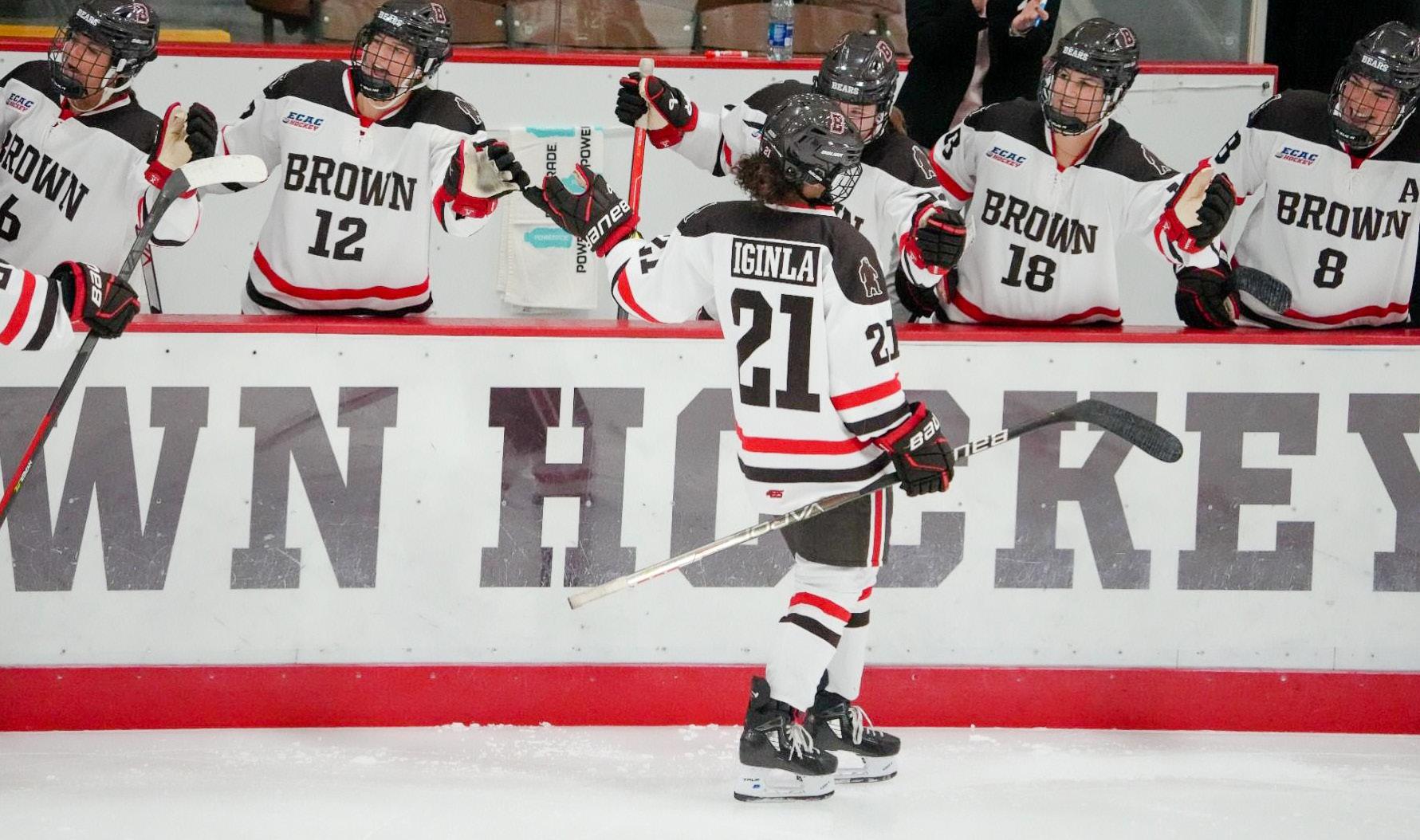
“We’re in a bit of a tough confer ence, one of the toughest in the nation, so there is no let-up. One through 12 in the ECAC is going to be tough,” Ruzzi said. “Are we where I want to be? No. But am I happy with our development from day to day? Absolutely.”
“All my teammates (were) just pumping confidence into me in prac tice, saying I’m gonna hit shots and they finally fell,” Mauricio said.
The game also featured standout performances from center Gianna Ai ello ’25 and forward Elizabeth Nelson ’26, each of whom finished with nine points, as well as forwards Mya Murray
’24 and Alyssa Moreland ’26, who each tallied nine rebounds. Moreland’s nine rebounds and eight total points each marked career highs.
“I was doing the things that I do really well – crashing for offensive re bounds, using my size and my strength … finding my shooters after I get on (offensive) board,” Moreland said. “I think the team did great today and we had a lot of energy.”
“A typical basketball rotation is go ing to be eight or nine players, but we have double that (who) are working hard and doing what they can to help the team get better,” LeBlanc said. “You know that players are ready for when their moments are called. He added that Moreland, Mauricio and Grace Kirk ’24 “really stepped up and played some great minutes and gave us great energy today.”
The Bears have now improved their record to 6-3 this season, matching their win total from the 2021-2022 sea son in which they went 6-20 overall and just 1-13 against Ivy League opponents. With three games remaining before Ivy play kicks off against Penn on Jan. 2, the Bears are poised to continue building momentum.
“I’m a real process-oriented per son, and I think the results will typi
cally take care of themselves,” LeBlanc said. “Our goal is to get better every day. The team is really hungry to get back in and continue having great practices.”
“We’re gonna build the wins,” Mau ricio said. “Hopefully we can start an other streak.”
The Bears will be back in action on the road against Providence College on Wednesday at 7 p.m.
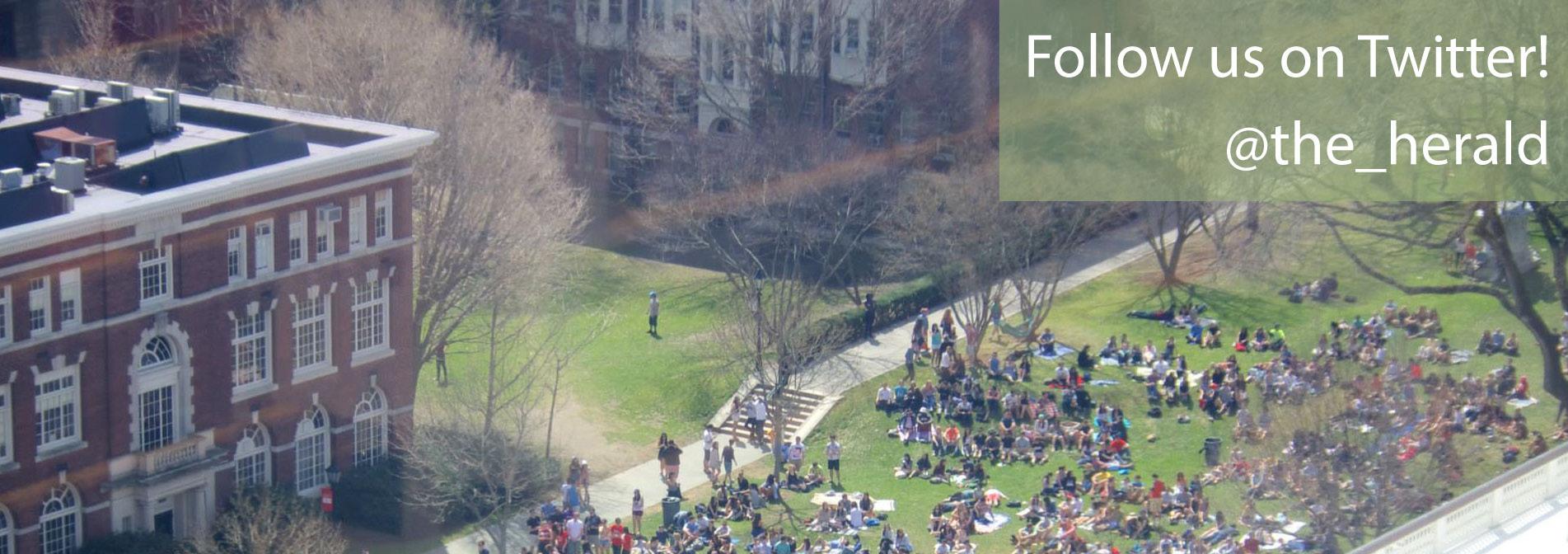
Big Red complete comeback with threegoal flurry in third periodCOURTESY OF DAVID SILVERMAN / BROWN ATHLETICS The Cornell line of Izzy Daniel, Lily Delianedis and Gillis Frechette was responsible for all four Big Red goals. In the final period, despite Brown at one point having a one-goal lead, Cornell was able to tie the contest, take the lead and add an insurance goal in a five-minute span.
decision to take leave was motivated by the pandemic.
“We are so very proud of you all and all that you will achieve beyond this campus,” Zia said. “We do not know what comes next, but we do know that it will be better because of you and your classmates, your generosity and talents, your ingenuity and compassion.”
Paxson opened her keynote address by reflecting on what it was like to wel come many of the 0.5ers graduating as first-year students in 2018, when she spoke on the “unique lived experiences” that each student brought to the Brown community.
“I asked you at the time, … in what sense, despite the great diversity of backgrounds and experiences that you bring, are we unified?” Paxson said. Nearly four and a half years lat er, Paxson said that this question is more relevant now than when she first asked.
During the pandemic, Universi ty community members found new ways to keep their friendships and networks alive remotely, Paxson said. Students came together to protect one another and the local community while still finding joy — whether it be in remote concerts or adapting research.
“Living through this common ex perience has unified you in ways that you may not really even fully appreciate today, and that experience will indelibly shape your perspective to life going forward,” she said. “The lives you live after Brown will be as unique as diverse and wide-ranging as the experiences and backgrounds that you brought to this University.”
Paxson specifically recognized Riley Flores ’22.5, who recently received the best research presentation award at the 2022 National Convention of the Society of Hispanic Professional Engi neers, The Herald previously reported. For Paxson, Flores’s accomplishment is
evidence of how “brilliant and dedicated people working together can change the world.”
Student speaker Goldstein opened his speech with a reference to his favor ite childhood story, “Something from Nothing,” an old Yiddish folktale that tells the story of a child who loves his blanket so much that he takes it every where until it starts to fray.
“When it seems like it might be time to throw (the blanket) out, Grandfather, a tailor, finds a way to reimagine what the piece of fabric can be,” Goldstein said. “This happens again and again un til finally, the last scrap of fabric is lost. Even a skilled tailor like Grandfather
cannot make something from nothing.”
Goldstein also reflected on the things that have defined the graduat ing class’s time at the University, from major national events like the 2020 election to two — not four — Spring Weekends.
He finished the speech by inviting the rest of the graduating class to dream of a new ending to the story, “one that is inspired by our friends, family and teachers — our blankets.”
“In our version, we learn how to knit together,” he said. “We have navigated so much already. … Now it’s time to celebrate that we have learned to make something from it.”
King and Scott then took the stage to ask their fellow graduates to look back on their time at the University and consider, “Was it worth it?”
Framing their speech with the economic concept of opportunity cost, King and Scott reflected on how their class invested time, labor and money into their Brown educa tion, and in return they have found a community.
The class of 2022.5 specifically made the choice to “step outside the box” during their college education, Scott said.
“One of our professors reminded us this year that if you think inside the box,
you are no better than a rat in a cage chasing cheese,” King said, eliciting laughter from the audience. “But the class of 2022.5 has already started to break down those boxes and cages.”
Wendy Sheridan, academic advising program coordinator and student re cords specialist, concluded the celebra tion by reading the names of midyear completers. The Chattertocks also sang the “Alma Mater.”
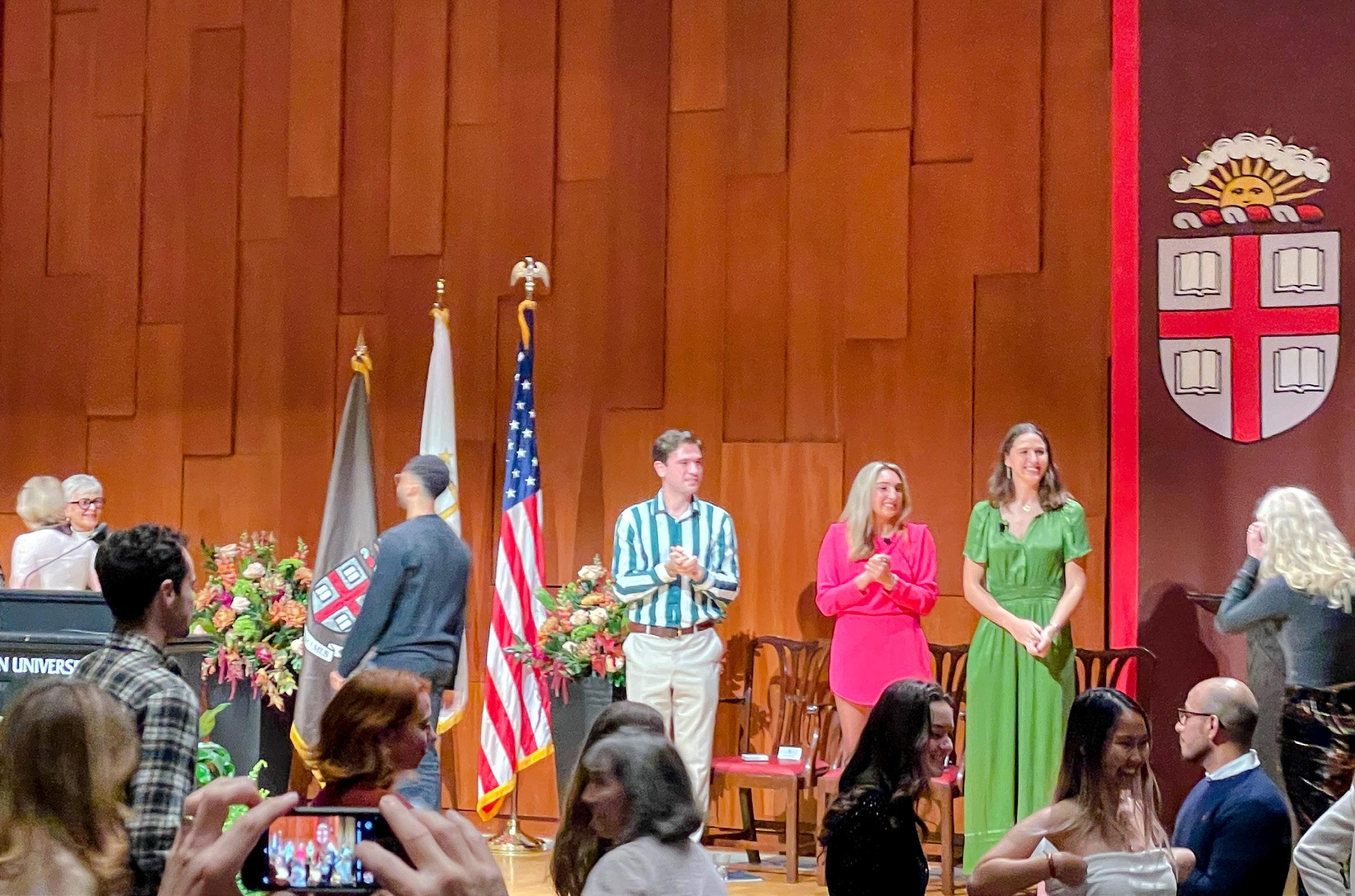
“It feels very surreal, like we’ve come a really long way,” said Liza Mul lett ’22.5, a former Metro editor at The Herald. “I’m a transfer, so it means a lot to get this special recognition for this very unique experience.”
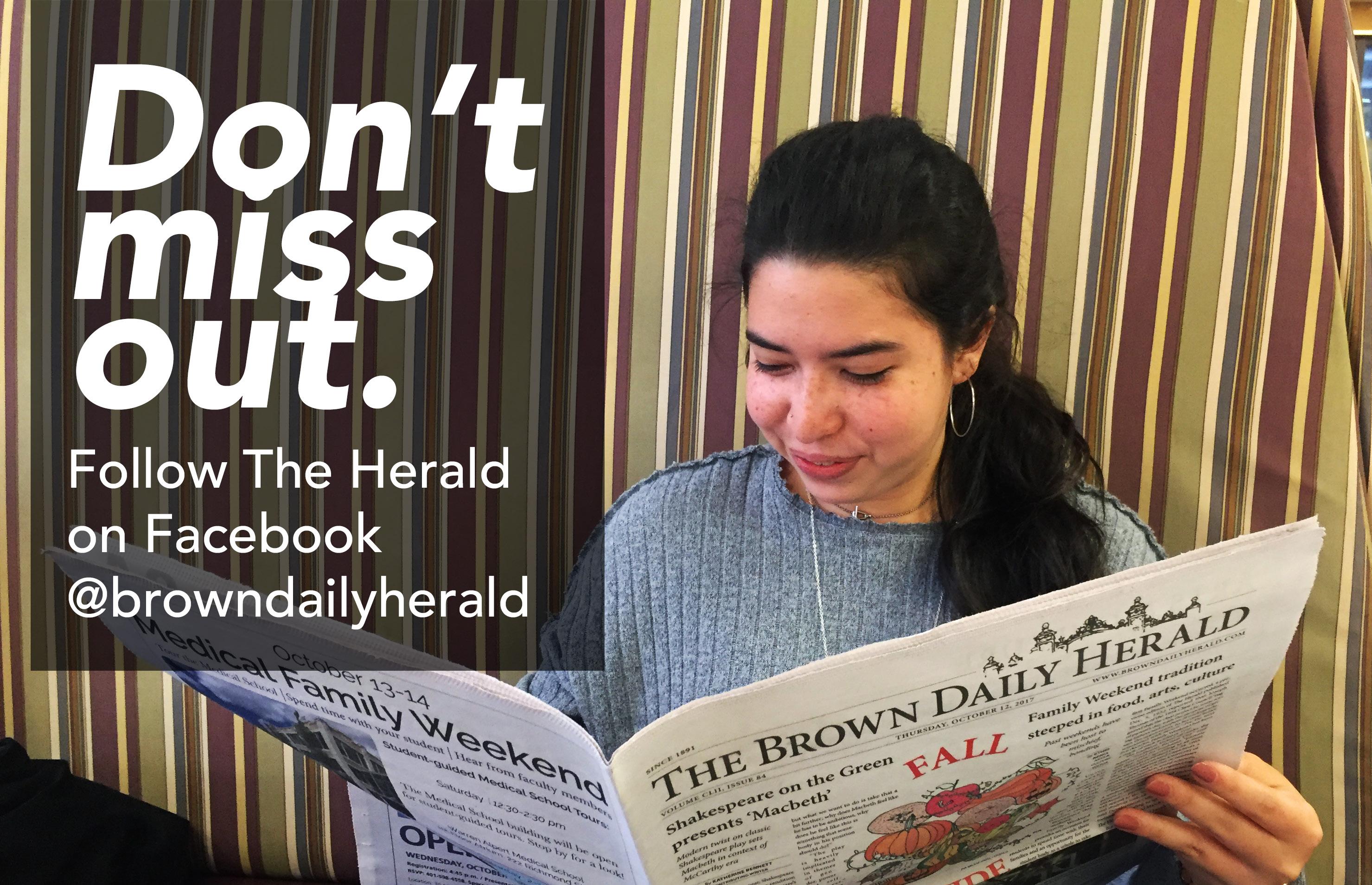
‘Wednesday’ lacks in plot, but is great for horror comedy, aesthetic
BY LIVIA GIMENES STAFF WRITER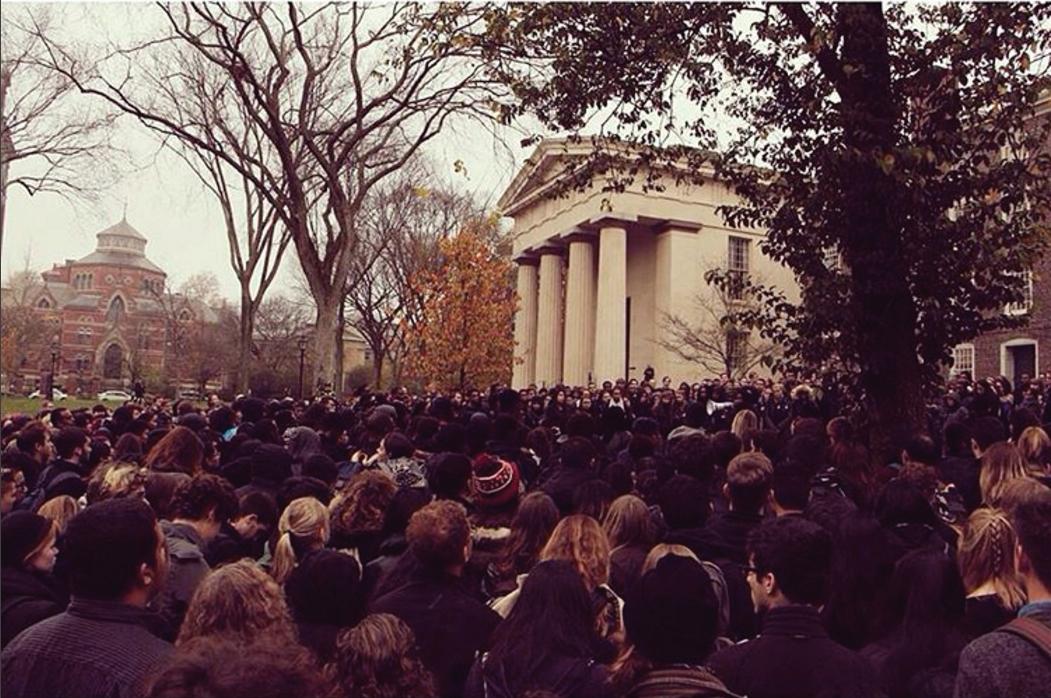
With streaming platforms constantly pumping out so many reboots, spin-offs and revivals, it’s rare to find one – es pecially in the young adult genre – that doesn’t feel like an uninspired cash grab. “Wednesday,” released Nov. 23 on Net flix, is here to surprise viewers with an entertaining and modern twist on one of pop culture’s most iconic families.
The show follows Wednesday Add ams (Jenna Ortega) as she is forced to attend the supernatural boarding school, Nevermore Academy, after being repeatedly expelled from her “normie” high schools for humans.

Produced and partially directed by Tim Burton, who directed several of the Addams Family movies, “Wednesday” is aesthetically perfect.
Burton’s knowledge of the source material definitely shows. From set design to cinematography, the show has an amazing gothic feel that is mixed masterfully with comedy. It plays on the nostalgia of several of the Addams Family movies while still being able to stand on its own two feet.
Plus, Jenna Ortega does an out standing job as Wednesday, making her feel sympathetic while not losing the odd tropes that are so quintessential to the character. Wednesday is weird to her core, which can sometimes be irritating, but is nonetheless entertaining and engaging to watch.
But the show does nothing ground breaking in terms of plot — despite
being about the occult, it is just an other “normie” teen drama. It follows a very traditional mystery-based story that is reminiscent of a show such as “The Chilling Adventures of Sabrina,” another supernatural Netflix teen dra ma. The plot follows a supernatural mystery that is somehow related to our main character while weaving in romance and relationship drama. Though the show sometimes uses too many cheesy teen show tropes, it’s never to the point where it gets hard to watch.
The good thing about “Wednesday” is that despite being cliche, the show
mostly succeeds at building its mystery. The reveal at the end is pretty surpris ing and keeps viewers entertained. What “Wednesday” does struggle with is its lore.
“Wednesday” is a supernatural show, but it never takes time to de fine the supernatural creatures in it — which becomes an issue when you have so many of them. Nevermore Academy is a voluptuous mix of vam pires, werewolves, sirens, hydes, me dusas and more that are just lumped under the term “outcasts.” And most of the time, their sole purpose seems to just add to the overall weirdness
of the show.
There is nothing wrong with that. The Addams family were originally cre ated to satirize traditional American values and were weird for the sake of being weird. But that premise does not work so well when you are trying to build a show whose mystery relies on the dichotomy of “normies” and said “outcasts.”
This does not mean that “Wednes day” is a terrible show. It’s far from that. At its core,“Wednesday” is an extremely entertaining watch that feels refreshing and fulfills all of your comedy horror needs.
As of now, Netflix has yet to con firm if “Wednesday” will be renewed for a second season. But consider ing the show’s immense success, it’s likely that Netflix will jump at the opportunity to give the show a second season. One can hope that in its second season, “Wednesday” can explain some of its lore and highlight the satire and horror that made it so good in its first season. But may be a better hope to have is that the show’s next act can stay true to the movie’s original elements that made it so great without dissolving into a boring cash grab.
‘Addams Family’ spinoff brings confusing lore but can entertain audiencesCOURTESY OF NETFLIX
Musical Forum’s ‘Fly By Night’ navigates grief, fate with music, comedy
Seven-person student cast directed by Lia Ortner brings modern rock musical to campus
BY KATIE JAIN CONTRIBUTING WRITERMusical Forum’s production of “Fly By Night,” a dark-yet-touching com edy musical, played five shows over three nights in Alumnae Hall this past weekend.
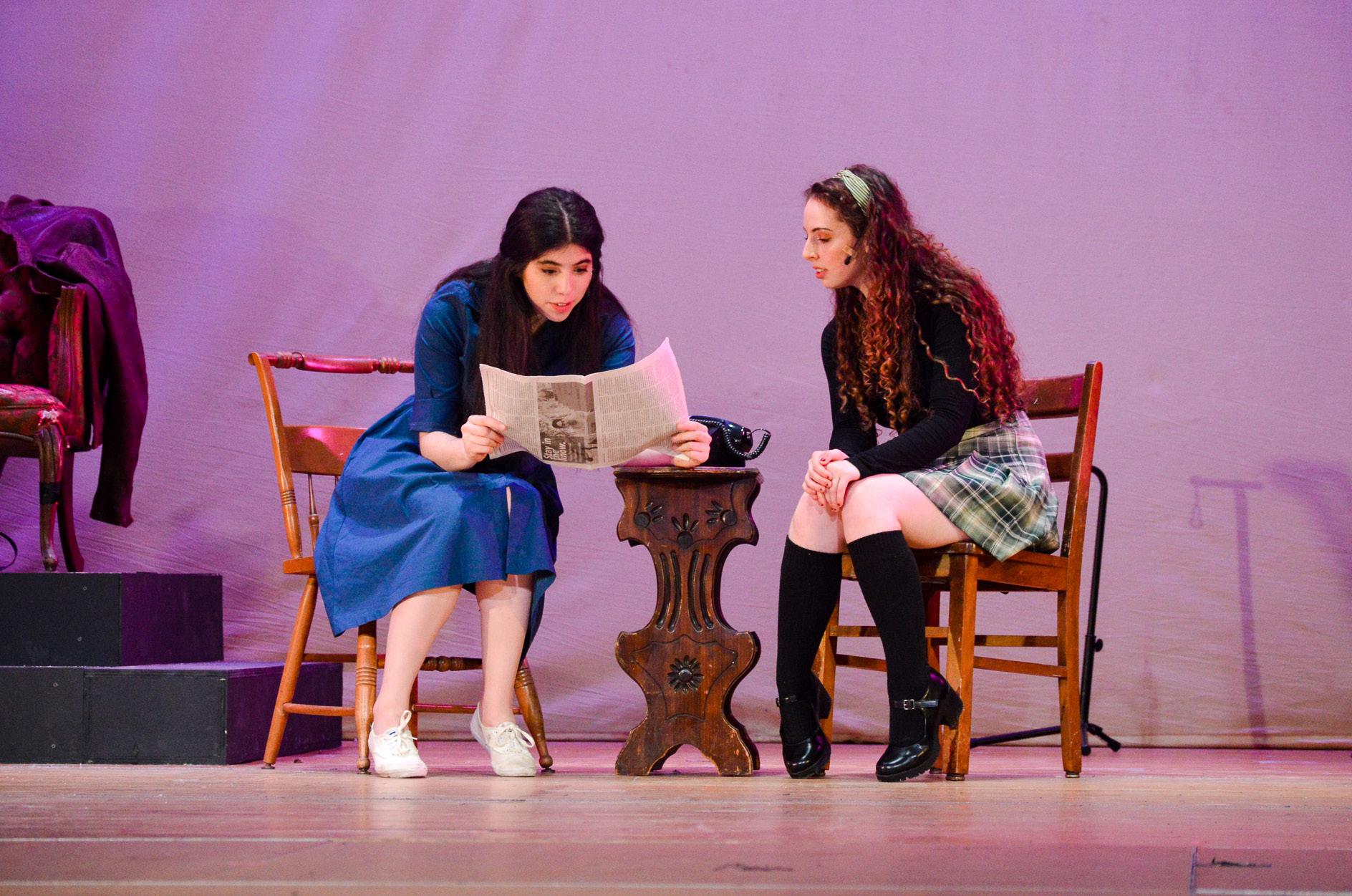
Written by Will Connolly, Michael Mitnick and Kim Rosenstock, “Fly By Night” tells the story of six charac ters who cross paths in New York City during the Northeast blackout of 1965. The musical “explores the connections between these individuals” and exam ines the role love, grief and fate play in ordinary lives, according to the show’s description.
“It’s about dealing with loss and finding signs, because everyone’s sort of searching for meaning. … It’s about fate and the incomprehensibility of that,” said director Lia Ortner ’25. “A lot of it is driven by grief in a way that the text kind of intentionally doesn’t acknowledge for a good portion of the show.”
Assistant director and stage man ager Fifolu Akinola ’24 added that the play addresses “how we can live our lives, even if there is just this destined journey that we’re going to go through.”
“Fly By Night” was well-received by audience members, who gave the show
standing ovations on all three nights. “I personally loved it,” attendee Lizzy Wu ’24 wrote in a message to The Herald.
“It was really well cast. Everyone was so talented and did great in their roles. The plot was really interesting, and the production quality was really great!”
‘It’s pretty timeless’
“Fly By Night” navigates a love tri angle between two sisters — Daphne, an aspiring actress played by Marina Benson ’24, and Miriam, a waitress with a passion for astronomy, played by Ellie Leibner ’24 — and a sandwich-maker whose mother recently passed away.
The show uses rock music to il lustrate the characters’ passions and regrets. To Benson, “Fly By Night” il lustrates “how music can bring people together and provide comfort in times of need.”
Though the show takes place in the mid-1960s, its message translates seamlessly to the present day, Ortner said. “It’s pretty timeless.”
Benson echoed this sentiment, pointing out, “blackouts still happen. People still get into weird, interpersonal relationships that have lots of connec tions. The web grows larger every day.”
“I want other people to see (the show) and be like, ‘Wow, this is about me,’” said Ortner. “I really see myself in all of the characters all the time.”
According to Ortner, the show push es two major messages in particular: “Just do what makes you happy if you can’t control your fate, and life is not the things we do but who we’re doing them with,” she said, echoing the final
line of “Cecily Smith,” one of the show’s central songs.
Both Ortner and Benson acknowl edged that much of the show’s humor comes from the way it uses caricatures to demonstrate a deeper message. For Benson, it was difficult to juggle por traying a character who played into cliches and was also a “real person ex periencing real tragedy.” Benson said that she was able to portray a more grounded Daphne by drawing on the commonalities between her and the character.
“A lot of the show is very silly and jokey,” Ortner said, adding that part of her intention as director was to “play up the moments of humor — which I really enjoy and I think land well with audiences we’ve had so far — but also convey that there is a gravity to some of the themes.”
‘Simple and intimate’: Building the show
Ortner first saw “Fly By Night” in 2017, though she had been listening to the show’s score beforehand. “I’ve loved (the show) for so many years,” she said. As a first-year, Ortner initially proposed that Musical Forum produce the show in October 2021. Though her initial proposal was rejected, Musical Forum approved the show last spring, allowing Ortner to spend the summer forming her production team.
“There’s a lot about (the show) that makes it well equipped for college the ater,” Ortner explained, citing the sev en-person cast as one benefit. “I like that the music is really catchy, really
exciting and new but also is fairly sim ple and really stays with you. I like that it doesn’t call for an insane overblown production and you can keep that kind of simple and intimate.”
Auditions for “Fly By Night” oc curred at the end of September and rehearsals began the first week of Oc tober. “There were some difficulties negotiating with the University for space. We ended up getting a kind of slow start,” Ortner said.
Despite facing initial challenges, auditions for “Fly By Night” went well, according to Benson. Auditioning was “really fun for me,” she said, adding that preparations for the show as a whole were “pretty stress-free.”
Ortner added that, though she, Akinola and music director Luca Ial lonardi ’25 thought they would have to spend hours debating who to cast, the decision came easily in the end. “We went through the list and we were all like, ‘No, this is our cast.’ And we had a real show,” Ortner said.
Finding community, overcoming challenges
“Fly By Night” was Ortner’s first time directing a show outside of a small project for one of her classes, though she had previous experience as a stage manager. “It was scary and I often felt very underprepared,” she said. “But Fifolu and the cast were al ways really great about covering where I fell through a little bit and I’m really grateful to them for that.”
Drawing in audiences also proved to be a challenge for Ortner, who said
that many community members had not heard of “Fly By Night” before. “We had to do a lot of the work on our own to get people really excited about the show — getting people on the production team, getting people to audition and getting people to come see it,” she said.
Additionally, Benson said that she contracted COVID-19 in late November, limiting her opportunities to rehearse. The day before “Fly By Night” opened, Benson got another virus, which she described on Saturday as having “some impacts on my voice but … mostly man ageable.”
She mentioned that while the vi rus made singing “challenging, to say the least,” it taught her “a lot of vocal health skills.”
By Sunday, Benson’s sickness had gotten worse, which prevented her from acting in the final performance. Ortner, despite having never rehearsed the part, played Daphne in Benson’s place.
Initially, Ortner and her crew were considering canceling the show’s final performance. But after postponing the show’s start time by 30 minutes, Ort ner was able to step in, using her past knowledge of the musical to play the role without mishap, while Leibner sang for her backstage.
“I think we all came to consensus that (Ortner) would be the best option because she knew all the dialogue, mi raculously,” said Akinola, who added that the last-minute change created “a greater sense of camaraderie” among the cast and crew.
“I love this community,” Akinola said. “I love the people that I’ve met.”
the lead to 22. Lilly then beat his defender to the rim to give Brown a 24-point lead, the Bears’ largest of the game.
Brown led 44-24 entering halftime, with Anya, Wojcik and Cooley all scor ing in double figures. Anya tallied 13 points and five rebounds, while Wo jcik scored 12 points, collected two re bounds and dished two assists. Cooley scored 11 of his 14 career points in the first half.
The Bears shot 18-for-32 from the field and 6-for-16 from deep, while also excelling defensively, holding the Bull dogs to 9-for-32 shooting.
“I thought we set the tone right away defensively tonight. I loved the confidence we played with offensive ly in the first half,” Head Coach Mike Martin ’04 said in a statement to Brown Athletics. “We want to be a program that is continuously improving. It’s all about development, individually and collectively.”


The Bulldogs opened up the sec ond half with a 7-0 run, shrinking their deficit to 13. But Lilly drew a foul and knocked down one of two free throws to end Brown’s drought with 17:02 left in the second half.
Shortly after, Lilly cut to the hoop and scored a layup to solidify Brown’s 47-31 lead. After a Bryant bucket, Wo
jcik hit a three-pointer, propelling Brown’s lead to 17 at 50-33. But Bry ant continued to put up a fight, cutting Bruno’s lead to nine points with 3:15 remaining in the game.
“You knew Bryant was going to make a run there,” Martin added. “They are such a talented team.”
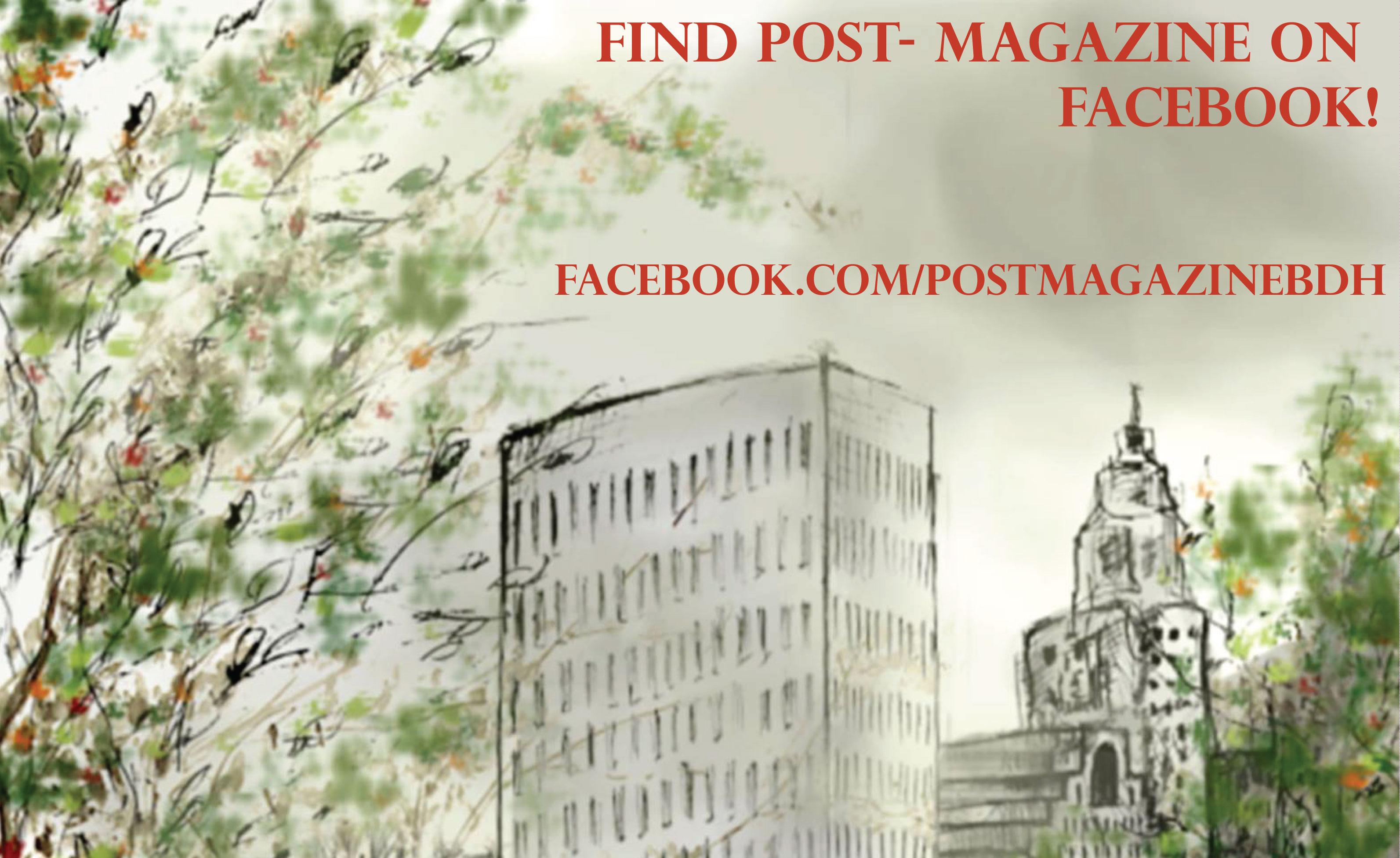
Lilly — who scored 13 of his 15 points in the second half — and Cool ey hit consecutive threes to take con trol of the game, giving Brown a 69-54 lead with 1:46 on the clock. Despite a last-minute effort by Bryant, Bruno hung on to win 72-60.
Wojcik, Cooley and Anya all notched career highs in points, scoring 18, 14 and 15 points, respectively. Lilly con
tributed on offense and defense, tal lying 15 points, five assists and five rebounds. Ndur made his first career start, leading Brown’s rebounding ef forts with nine total. Wojcik, Cooley, Anya and Lilly collectively scored 62 of Brown’s 72 points.
“I enjoy it, I live for … big games (and) big possessions,” Lilly said in a statement to Brown Athletics. “You’ve got to go finish it. That’s basketball.”
“We had a great overall team effort to beat a really good Bryant team,” Wo jcik wrote in a message to The Herald. “We set the tone defensively from the beginning and never looked back. On offense we got great shots and shared the ball and played confidently.”
The Bears secured another road victory Sunday at Hartford, beating the Hawks 65-51. Brown shot 26for-50 from the field while holding Hartford to 19-for-49 shooting. Bruno also notched a season-high 19 assists as a team.
“Overall, we can definitely play more consistently at both ends of the court, but, all in all, dealing with a quick turnaround after an emotional win Friday, today is another sign we can be a good team,” Martin told Brown Athletics.
The Bears will aim to push their winning streak to five when they take on the University of Rhode Island Wednesday.
Fang ’26: Fight ‘Keeney cough’ with info about health resources
Over Thanksgiving break, I finally caught the inaugural first-year sickness. On Wednesday, I felt a sore throat coming on. By Thursday, I got a headache, and on Friday, I went through bouts of chills and sweating. A feverish temperature reading at Health Services confirmed my sick ness, and I reluctantly joined the unfortunate group of first-years struck by sickness during their first semester of college.
Brown students falling ill is an experience so universal that it’s become the topic of jokes and nicknames on campus. In October, for exam ple, the “Keeney cough” overtook South Cam pus, along with its North Campus equivalent, the “Metcough,” a riff on Metcalf Hall. Almost everyone on my floor has been in some state of illness during the past two months, some peo ple multiple times. Medications and mysteri ous elixirs for sinus infections, runny noses and fevers are constantly being passed between my hallmates.
For first-years, I have observed ample confu sion about the extent of health insurance cov erage, when it is appropriate to go to class, what medical support Brown offers and where to get a proper dean’s note to excuse missed home work and assignments. For those first-years un lucky enough to test positive for COVID-19, it was difficult to isolate with roommates.
The problem is not necessarily a paucity of resources on Brown’s campus, but a lack of knowledge on what they are and how to obtain them. Many first-years falling sick may be deal ing with their own health care for the first time in their lives, which could make them vulnera
ble to misinformation and poor decision-mak ing. Brown should develop a comprehensive guide on how to navigate student sickness so first-years can more easily locate and utilize necessary health resources to aid their personal and academic needs.
The “freshman plague” is a phenomenon that is prevalent across American college cam
dent Support Services of students’ needs, and contacting Health Services for care. Brown’s BWell page is also a great source for health information on how to manage colds. When I was ill, these online resources and the staff at Brown’s Health and Wellness Center were helpful, but I still felt relatively lost on how to plan my academic schedule around my
tion. But the University’s existing guidelines on how to navigate sickness at Brown are of ten buried within confusing web pages, mak ing it difficult for students to find specific information.
Brown needs to close this information gap among first-years, preferably early on as a part of orientation week. Information on how to set an appointment with a physician at Health Ser vices, where to buy medication and when and how to obtain a dean’s note should be made easy to access and understand for first-years. The health services that are offered on campus and the locations of the closest urgent care fa cilities and emergency rooms should also be directly communicated to students.
puses. It makes sense that first-years get sick easily: Close contact is inevitable when stu dents are sharing rooms, showers, desks and dining tables. Additionally, the stress of a new environment, lack of sleep and exposure to new germs can all contribute to sickness. Missed tests and homework assignments because of sickness can also compound student stress.
Currently, Brown’s “Sickness Support” webpage recommends filling out the Sickness Support Request Form, which notifies Stu
sickness. I knew I had to get a dean’s note if I wanted to have excused class absences, but was unsure exactly what the process was for asking for one — did I ask my advising dean? Would she need to see the report showing my diagnosis of a fever? For my friends who con tracted COVID-19, negotiating essay dead lines and when to retake midterms with pro fessors was a hassle, and their roommates struggled to find a dorm room willing to take them in while their roommate was in isola
While it’s possible to argue that Brown’s hands-off approach presents an opportunity for students to develop health care independence, failing to provide first-years with clear guide lines and information related to sickness is not an effective way to promote a healthy campus. Making an effort to ensure that Brown’s re sources are easily accessible and widely used will make students better equipped to handle their health care on their own. After all, as long as the Keeney cough is around, students will continue to use Brown’s health care services.
Juliet Fang ’26 can be reached at juliet_ fang@brown.edu. Please send responses to this opinion to letters@browndailyherald. com and other op-eds to opinions@brown dailyherald.com.
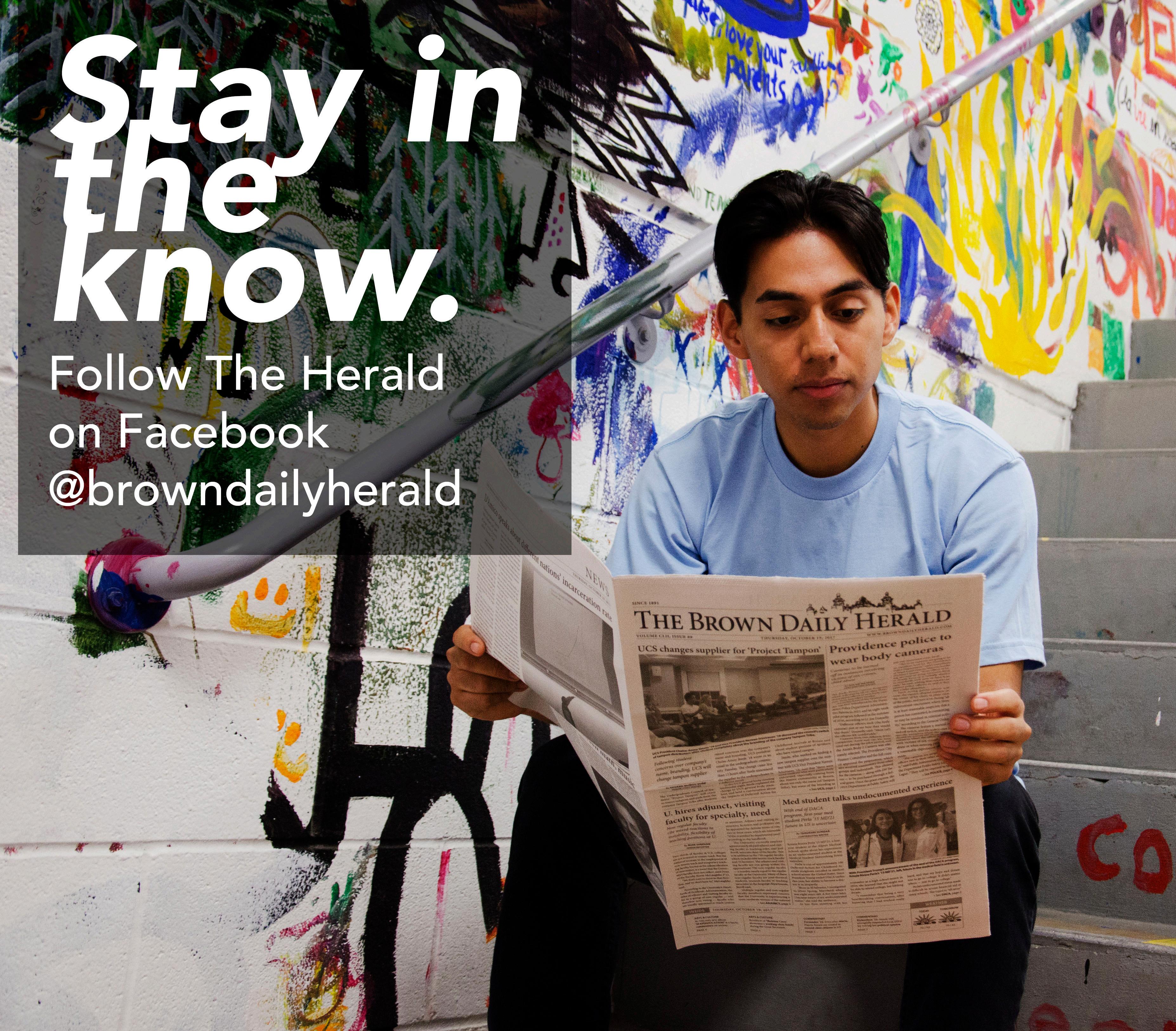
“Making an effort to ensure that Brown’s resources are easily accessible and widely used will make students better equipped to handle their health care on their own.”
Though Brown is known as a queer place — and demographics of queerness are about five times the national aver age — queer people remain a minority on campus. “I would say there are nich es and circles that feel intentionally and particularly queer,” Edie Fine ’25 said. “I was expecting more universal queer ness, which I think is not the case.”
Coming from Los Angeles, Coco Kaleel ’24 expected more openly queer people than she first encountered. “When I showed up here, I thought everyone would be gay, but only some people were.” She acknowledged that her experience is unique in this regard — “I have talked to lots and lots of peo ple who are like ‘are you kidding me, it’s so gay here,’ I’m like ‘what?’ and they’re like ‘nobody was gay where I’m from.’”
Fine, who was part of a predomi nantly queer community in New York City in high school, feels that “relative ly, it’s not the queerest haven in the world. That’s a very particular history that I come from, that I know informs the way I interact with queerness,” they said. “I did start to see it as a default or as a norm, which is not the reality of most places.”
Though Brown is not consistently queer, Fine has found “havens within academic spaces, extracurriculars and off-campus clubs, that have felt super queer and really homey to me.”
Strides made by the administration at Brown — which is openly and vocally supportive of queer students — con tribute to queer safety and culture on campus, Director of the LGBTQ Center Caitlin O’Neill said. “We’re really seeing a clear investment in the experience of LGBTQ students at Brown: from Brown higher administration, from Brown alumni and from Brown par ents,” they said. “And I think Stonewall House is a really great symbol of that.
To make more space for LGBTQ stu dents, being able to expand the budget, marking that as somewhat of a priority around fundraising … acknowledging that that’s really cool, and that speaks to changing tides.”
In the past, the center has worked with the administration to adopt poli cies that support queer students, such as making name and email changes self-service and having multiple pro noun options on Banner, O’Neill said.
In recent years, due to changes in the political and social atmosphere at Brown and around the nation, the work of the center has begun to look different, she said. While the center used to be one of the only safe spaces for queer people on campus, “there are (now) lots of places where students and faculty can feel whole and seen in their identities, which allows us to think more about, for instance, how we’re connected to the academic mission of the university, how we create spaces of belonging,” they said.
Currently, the center is working on “bringing more artists, scholars, performers, intellectual individuals to share their work and to talk about how it intersects with LGBTQ identity,” O’Neill said. Student staff members are also doing digital outreach, archiving queer history and helping to expand the closet at the center, which is designed in part to “provide gender-affirming garments and underwear to students who need it,” they added.
The administration’s support of the center is vital to its existence, O’Neill said. “It’s important to note that I’m a university administrator, so yes — the center is absolutely part of Brown, part of the overarching administrative structure.”
The support of queer students by
the administration is the result of a complicated history, the Herald previ ously reported.
Several clubs on campus use the center as a space for their program ming, O’Neill said. The Next Thing, a confidential support group for queer students of color, has in past semes ters used the space to hold meetings. The group “acknowledges the ways in which historically people of color have struggled with being seen and included in the LGBTQ movement,” they said. “So this is Brown students’ way of being like ‘okay, what is the kind of space we’d like to see for ourselves and build for ourselves?’”
The Queer Alliance, which “serves as a hub of queer organizing on campus, with a mission to foster and facilitate queer leadership and programming,” according to the Brown website, also meets at the center.
In the past, the QA has organized LGBTQ dinners, queer carnivals and PrideProm, an event for queer students to have a prom uncentered around het eronormativity, as the Herald previously reported.
The institutional support of queer ness at Brown goes beyond the Center; queer studies — history, theory and culture, in particular — are taught in several departments at Brown.
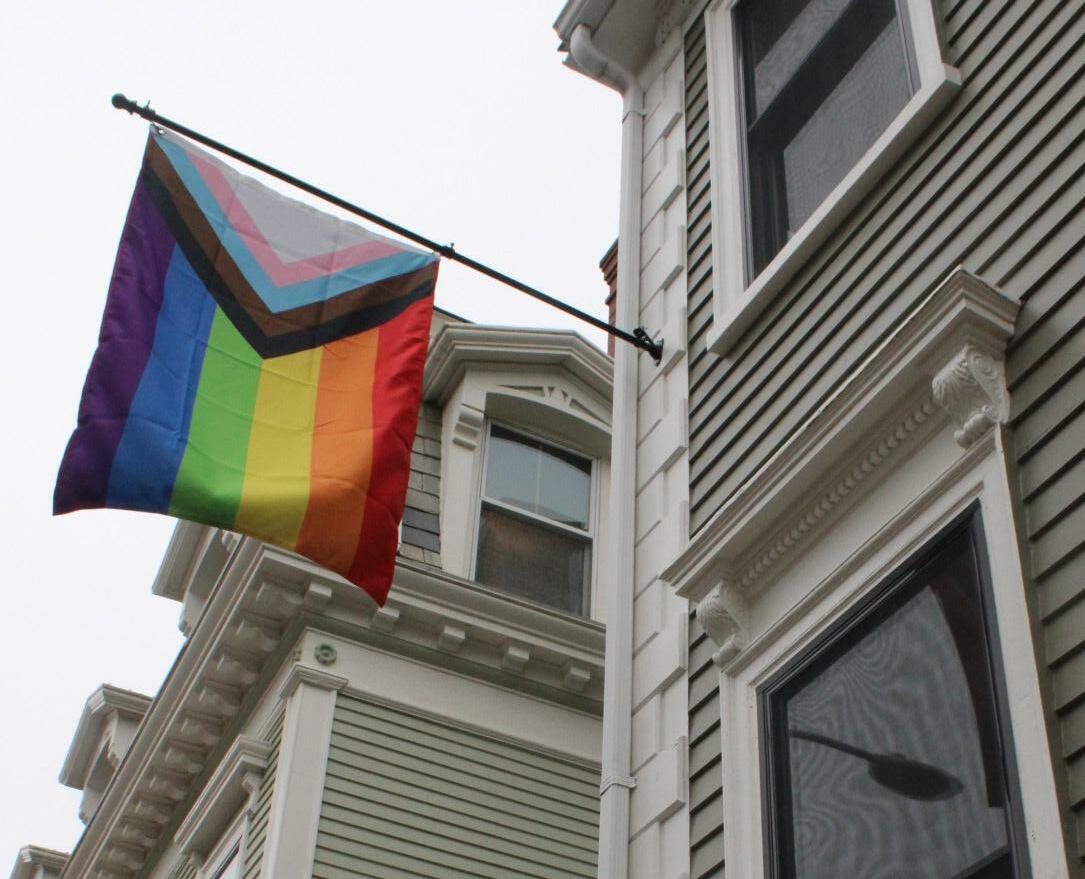
“Academically, I seek out courses where queerness is a big part of the syllabus,” Fine said. Their first semester at Brown, Fine took a trans-lit class that allowed them “to learn in an affinity space. There were vastly different expe riences in the container of the class, but we had some shared understanding of moving through the world in a rejection of normativity.”
But some classes that are not aca demically focused on queer experience can also become queer spaces. Human ities classes tend to be more associated with queerness, according to Bechta, who is planning to double concentrate in Literary Arts and Architecture. Their classes — particularly those focused on creative writing — have a large popula tion of queer people.
Bianco, on the other hand, has no ticed that the classes he is taking for his mechanical engineering degree tend to be predominantly straight, he said.
“In my perspective, a large part of queer experience is having been through a process of dealing with who you are and how that’s different from societal expectations, and being okay with that — and part of that is getting in touch with your emotions, and fre quently, consuming lots and lots of media, like literature and film,” Kaleel said. “With that, I wouldn’t be surprised if there’s a higher population trend to wards trying to understand why that media could be so impactful, or how media can be impactful generally.”
Kaleel is double concentrating in Computer Science and Music, and they have noticed that while some institu tional spaces they are part of — such as Environmental Program Housing and Brown Design Workshop — are not explicitly queer, they are predominantly queer.
Similarly, Fine feels that the Un derground Coffee Company, the stu dent-run café at which they work, is very queer. “There are spaces that are not intentionally or explicitly queer that sort of become that way because of the nature of what they are,” they said.
Though Bechta has never attended programming by the Center or other queer-related and administration-sanc tioned events, she often finds herself in wholly queer settings, she said. “I stop by when I see (a LGBTQ Center) table, and I get a pin — and I see those pins
all over the place, the bears with the rainbow outline,” she said. “And I’m like, ‘oh cool, another one.’”
The sightings of these pins — which are sponsored by the administration, but worn by queer individuals who are not necessarily affiliated with one specific campus organization — are representative of a broader trend at Brown: queer spaces are not exclusively institutional.
Luci Jones ’23 has “never been the kind of person who joined GSA in high school,” she said. “I think I’ve gone to Pride maybe twice and it was great, but I kind of was like, ‘my legs are tired.’ ”
When she first got to Brown, Jones was excited by the idea of institution ally organized queer spaces, such as the LGBTQ Center. But after attending a workshop about bisexuality at the Center during her freshman year, she realized that spaces designed to discuss queerness weren’t what she was looking for. “I obviously wanted to find other queer people, but just being in spaces where all we were talking about was our queer identity didn’t totally work for me,” she said.
At the beginning of this year, Jones began running Queer Soccer, an infor mal space for queer students to find community while playing a low-pres sure sport, The Herald previously re ported.
Kaleel attended Queer Soccer this semester and enjoyed the social expe rience. “I was curious to see if it would feel like ‘oh my God, this space is spe cifically queer,’ but it kind of just felt like another group of people at Brown,” she said.
Other clubs on campus, though not explicitly queer in their origins, have become spaces of queer joy and community, such as the Poler Bears, Brown’s pole dancing club. It was one of the reasons Fine chose to come to Brown — they “started to learn about what (the Poler Bears) did before even getting into Brown, because of the cul ture, the celebration and liberation of a space that is inherently sex positive and performance-oriented. It made me really excited to be on a campus that had that as a possibility, that that could even possibly emerge from the culture that existed here.”
When Fine auditioned for the Poler Bears, the directors at the time were beginning to alter the originally skill-oriented makeup of the team to
“rewrite the narrative of the script of what the club had previously been,” they said. Though Fine had no prior experience in pole dancing, they had a background in drag and queer per formance art, which appealed to the directors. “From there, it became much more of a space of queer expression.”
Now that Fine is co-directing the club, they are able to help construct the team by auditioning new people, and they “continued on that path by being intentional about the folks we allow onto the team. It’s really about the community of it as much as it is about the skill.”
Fine is also in the process of begin ning Brown’s first burlesque club, in which they intend to create a similar atmosphere of queer performace.
Outside of purposefully queer spac es campus organizations, queerness exists in social communities within the greater Brown community as well.
For Jones, “queer community has come in the form of mostly queer friendship,” she said. “I think just hav ing that sense of shared experiences, it’s the most comforting and most validat ing space for me. I wouldn’t say I active ly seek out LGBTQ spaces on campus, I just gravitate towards people who are understanding of my experience, and those often happen to be people who are also queer.”
“I came into this school identifying as a gay man and I’m leaving as a trans woman,” Sapiro-Gheiler said. “This is a place where I was able to explore a lot more of living in the ways I want to, the ways that make me happy and joyful — whether that’s from being outside of the home environment, being in the Brown environment, the people I’ve met here, it’s a combination of every thing — but I’ve definitely been able to feel more comfortable being queer here than anywhere else.”
Heteronormativity is subverted at Brown, Bianco said, because straight ness is rarely assumed. “People are more fashionably adventurous here, so you can’t assume (any sexual orientation),” Bechta said. “That was a thing first se mester, I was like ‘wow, there are so many gay people,’ and then I realized sometimes straight people just had counterculture fashion.”
Brown is also a relatively com fortable place to come out informally, Kaleel said. “People (have stopped) really coming out, they’re just talking
about crushes or making out with peo ple at parties.”
Unlike at Bianco’s high school, they “haven’t noticed any real divide” be tween queer and straight communities. “The fact that I’m queer has had way less of a bearing on my social groups than it did in high school, it’s not even something I really consider. Things just happen how they happen and that’s what it is.”
Bechta’s friend group contains a mix of queer and straight people — “I’m definitely hanging out with way more cishet people than I was in high school,” they said — though she has a separate group of friends that are exclusively and explicitly queer. They sometimes find themselves wanting to spend time with those people for the experience of being surrounded by queerness, she said.
Both queer and straight people so cialize at EGO, a gay club in downtown Providence, Kaleel said. It was a popular space during her first year, since the club is 18+ and cheaper than usual on Thursday nights.
Though straight people go to EGO to party, the atmosphere is still predom inantly queer, Kaleel said. “I’ve been at EGO and been like ‘okay, straight friends, you have to tip the queens. Let’s talk through how this is gonna happen.’”
Being a first-year student when COVID-19 regulations were in place changed Kaleel’s relationship to queer communities at Brown, she said. The people who lived directly next to her — and the only ones she had social access to, because no clubs or classes were held in person — were overwhelmingly straight. “Certainly when we met they were like ‘you are the first gay person I’ve ever been friends with.’ I definitely felt forced into a representative role… I was like ‘this is weird and isolating.’ ”
“That’s informing my experience a lot when I say (Brown is) less queer than people think,” Kaleel said.
Now, Kaleel has found her place in a more queer social environment — many of her friends from first year have come out, and she has joined environments that are significantly more queer. “Right now, I would say Brown is pretty queer. That feeling has evolved, though, since I was a (first-year), when I did not feel (that) way … the social scene I exist within is very queer. A party I was at last night — I’m trying to think if I know a single straight person in that room.”
